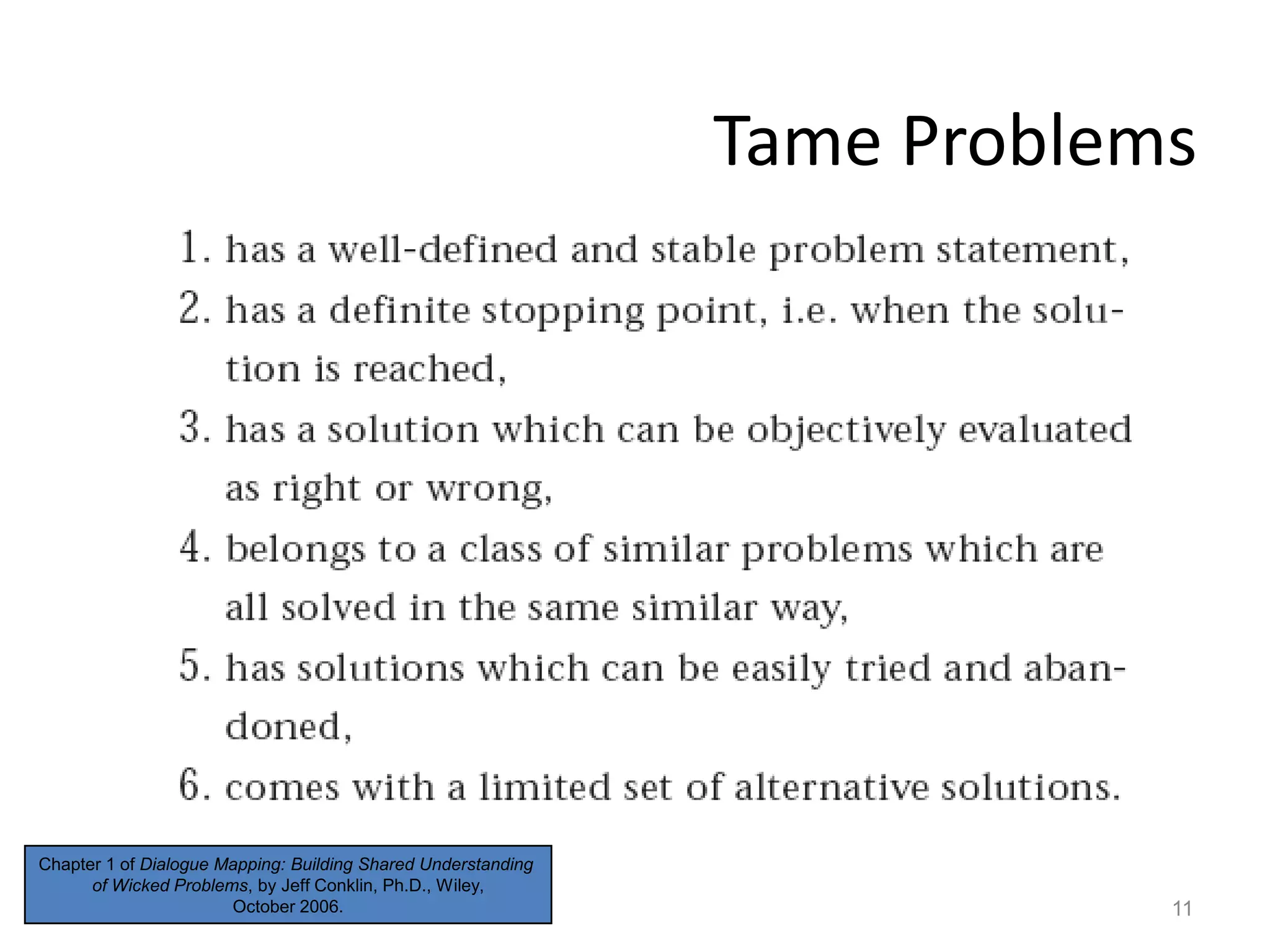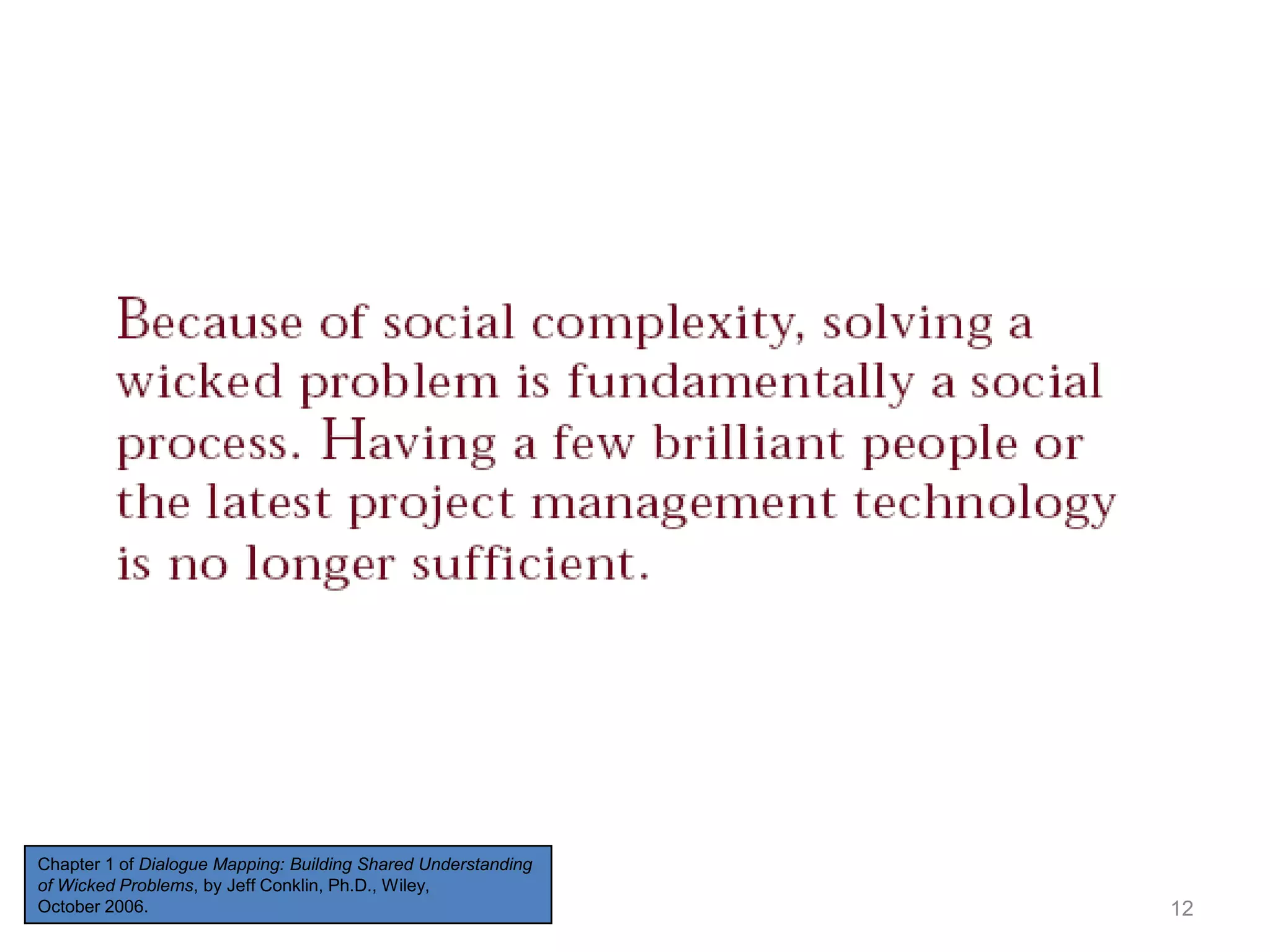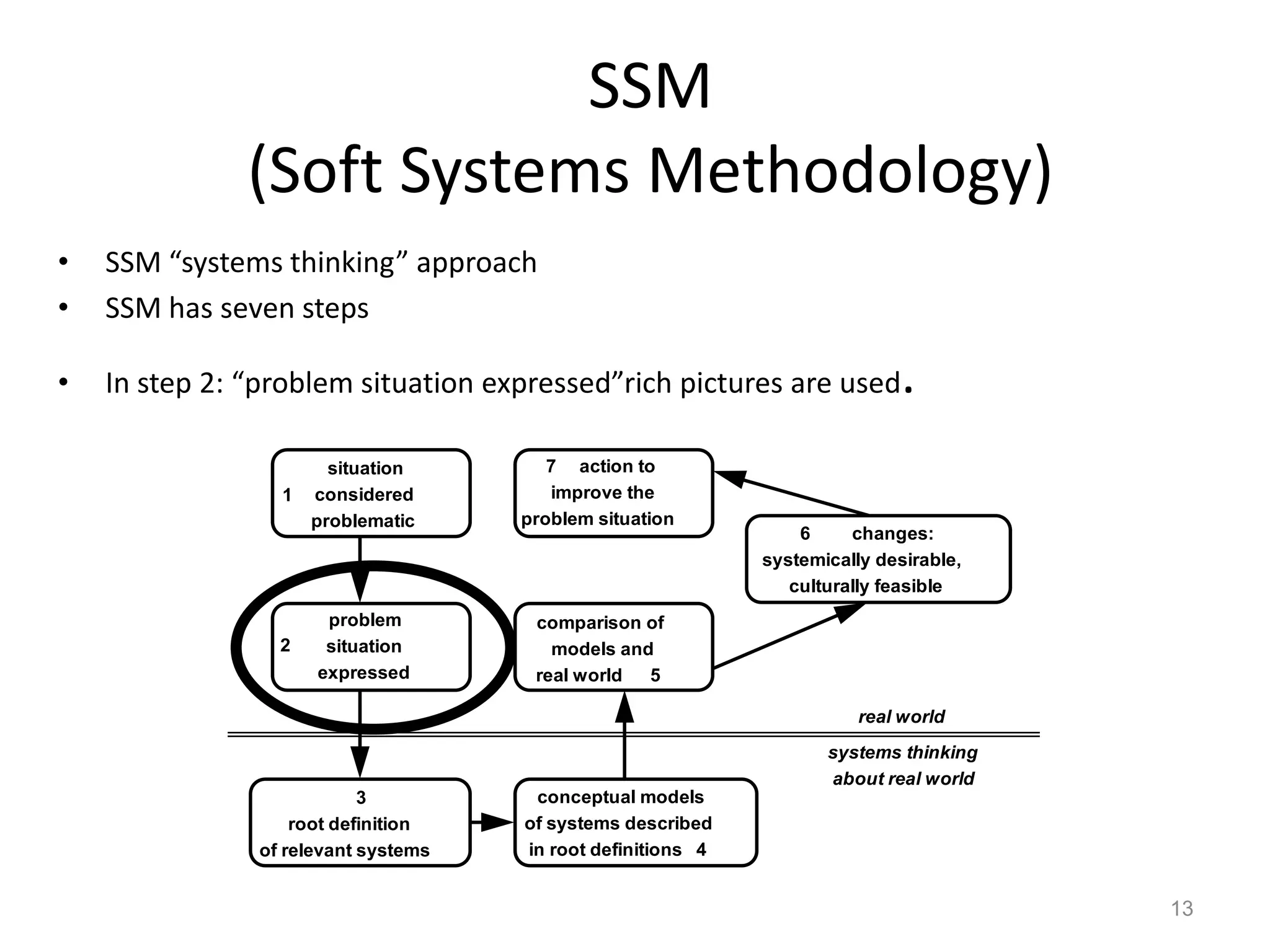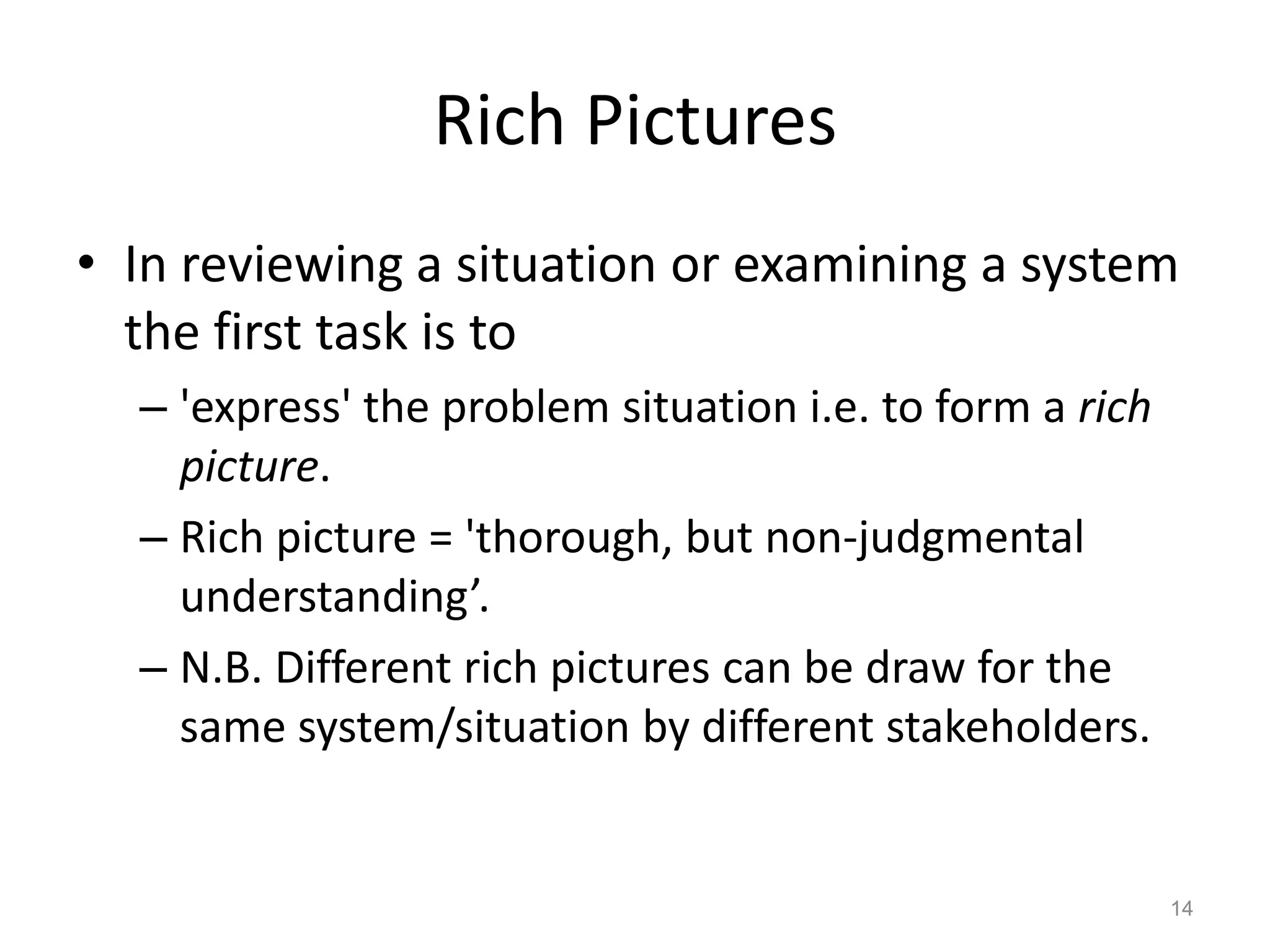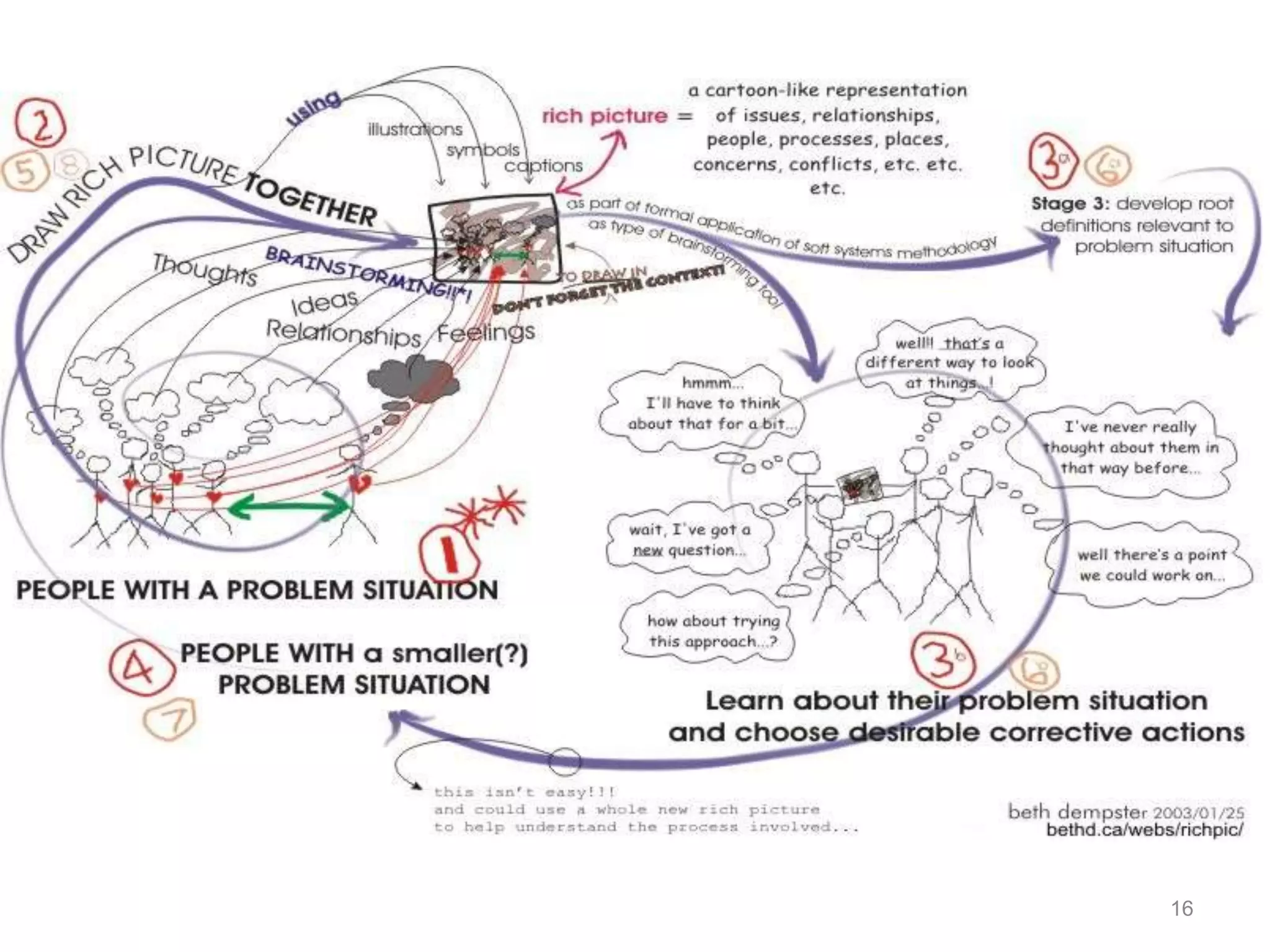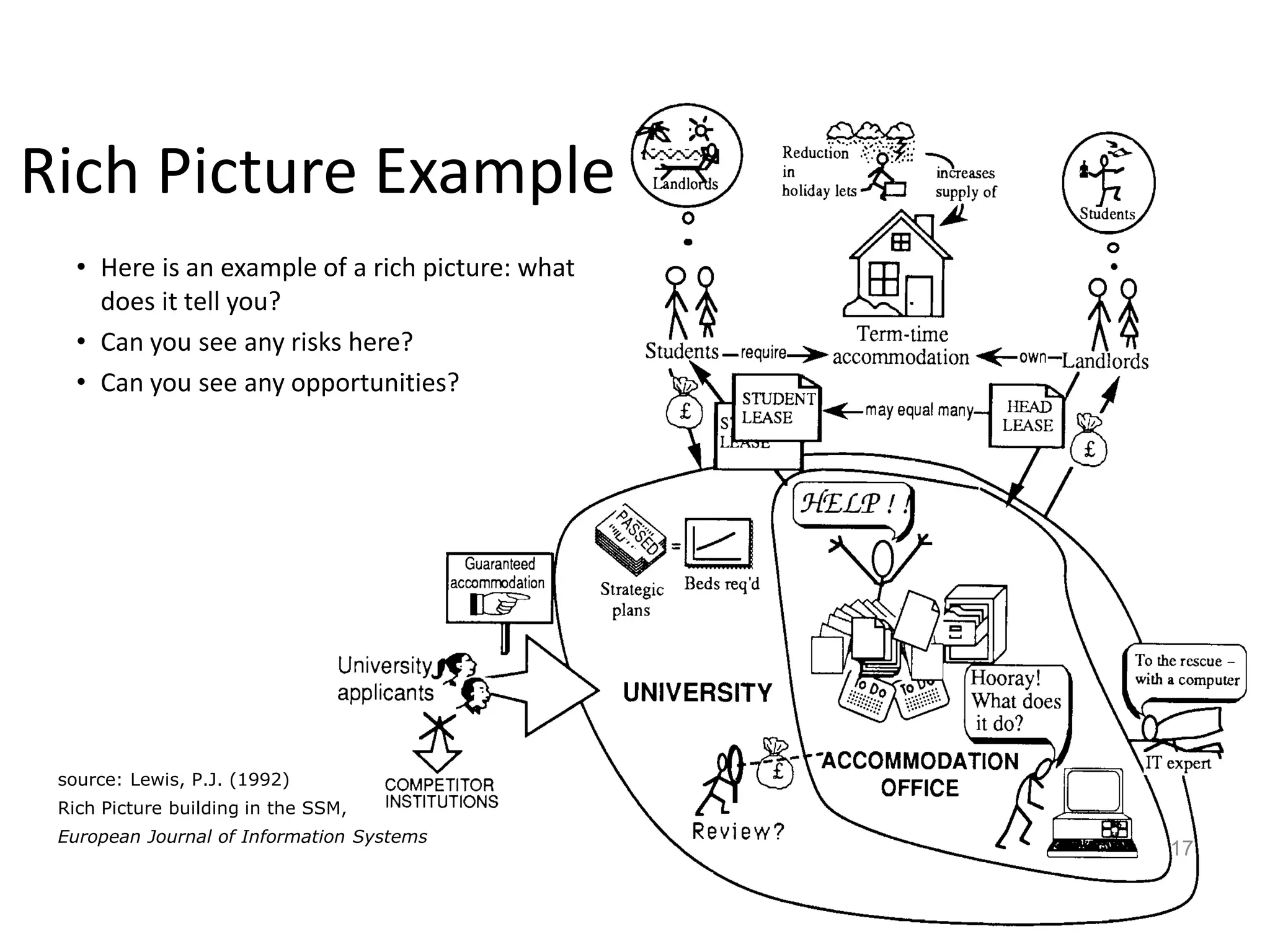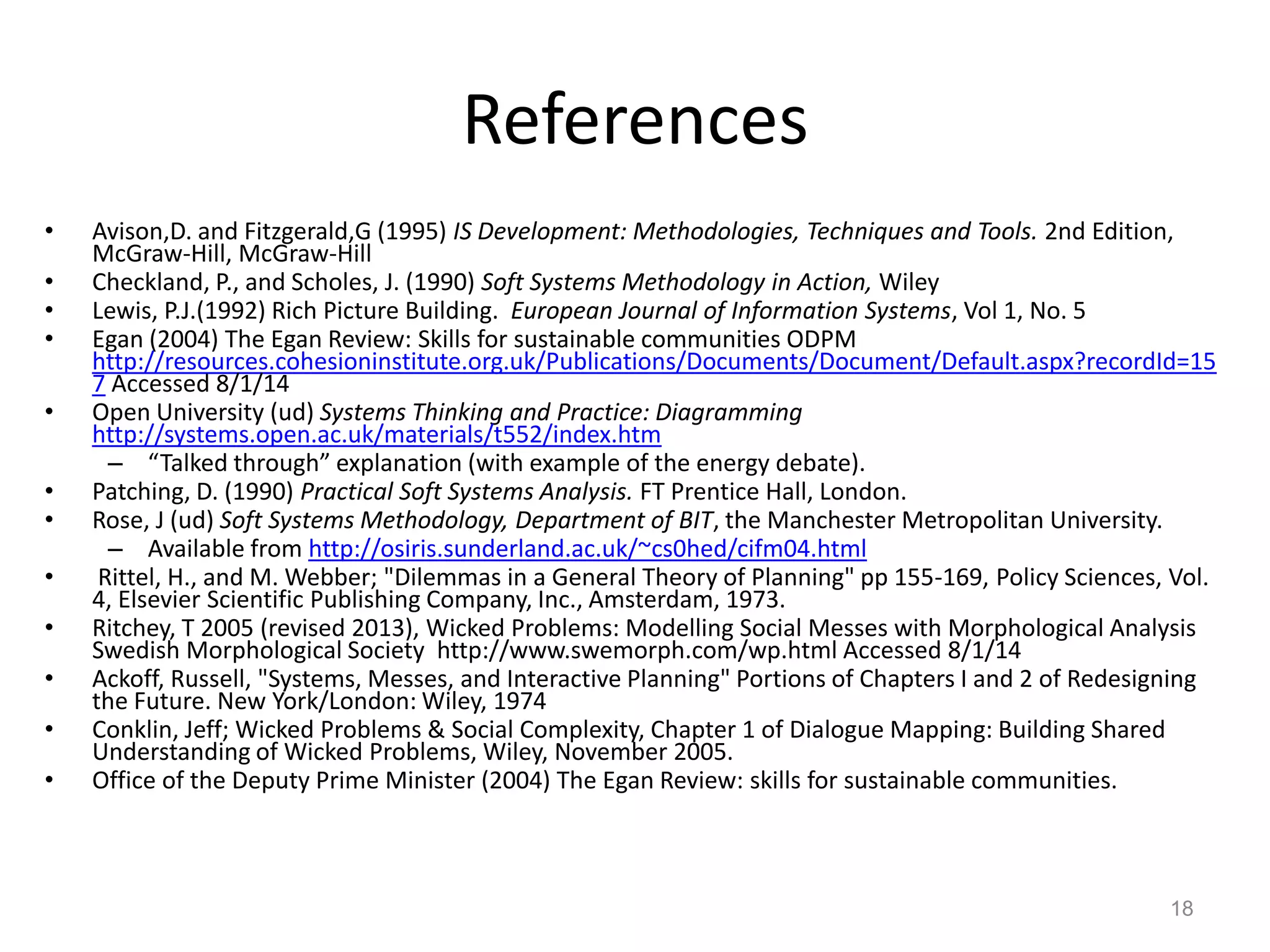Wicked Issues
Taming problems through Rich Picturing and Soft Systems Methodology
This document discusses wicked problems and how rich pictures and soft systems methodology (SSM) can be used to address them. It defines wicked problems as having no definite formulation, no stopping rules for solutions, solutions that are not true or false but better or worse, and consequences that are difficult to predict. SSM is presented as a systems thinking approach with seven steps, and rich pictures are described as a way to express problem situations in SSM's second step through diagrams that show relationships and issues. An example rich picture is provided, with questions about what risks and opportunities it reveals. References are given for further reading on wicked problems, SSM
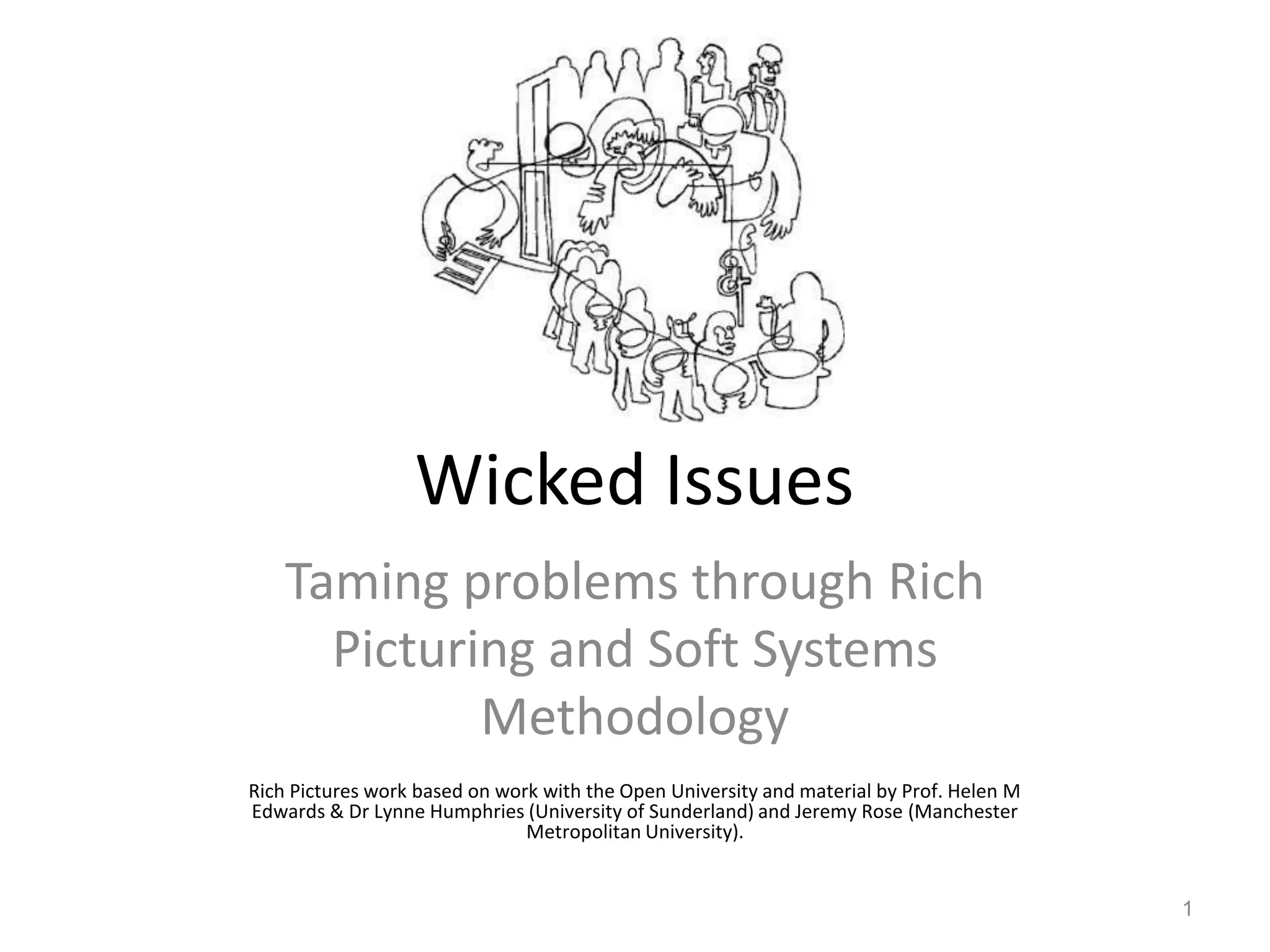
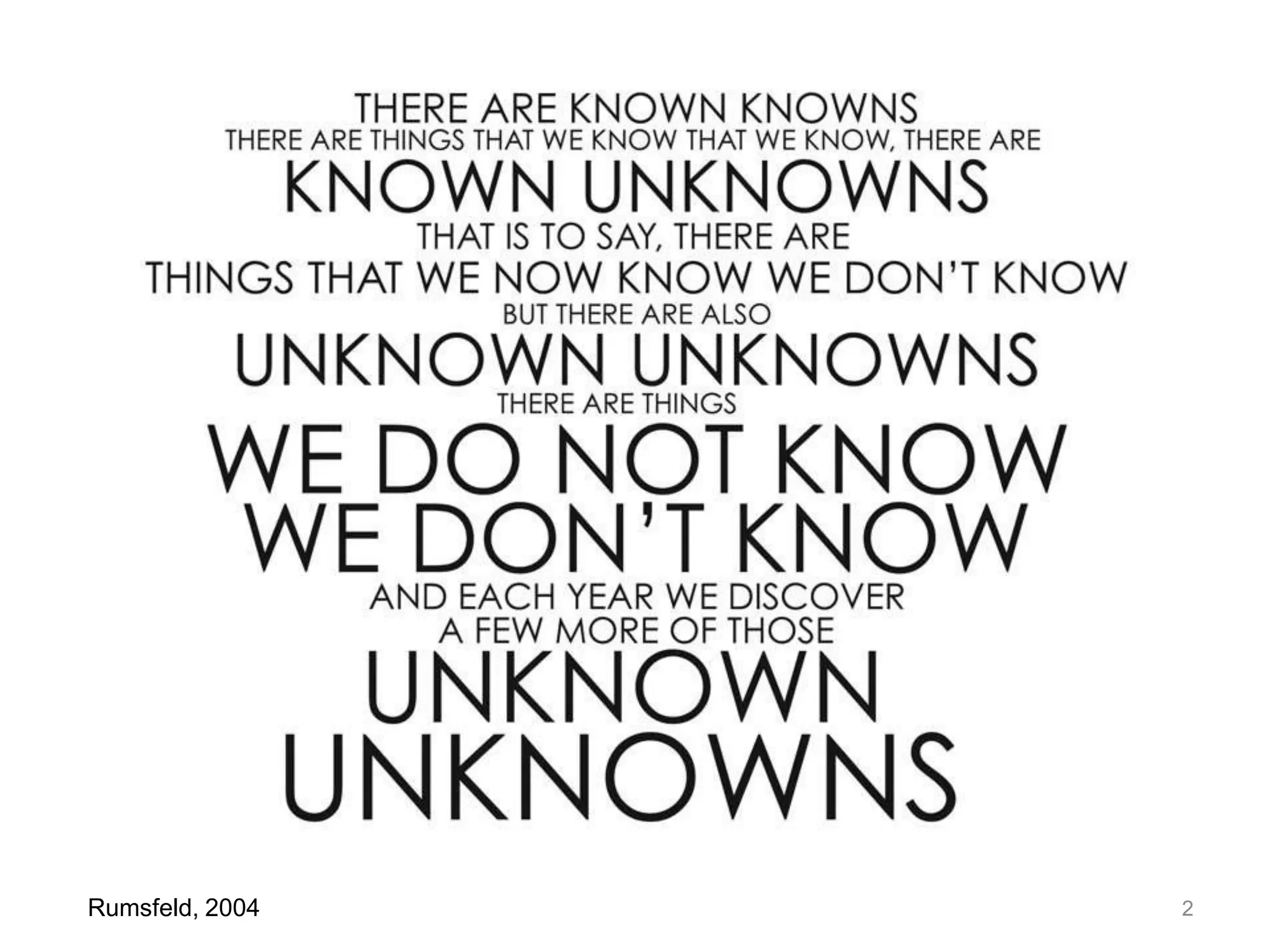
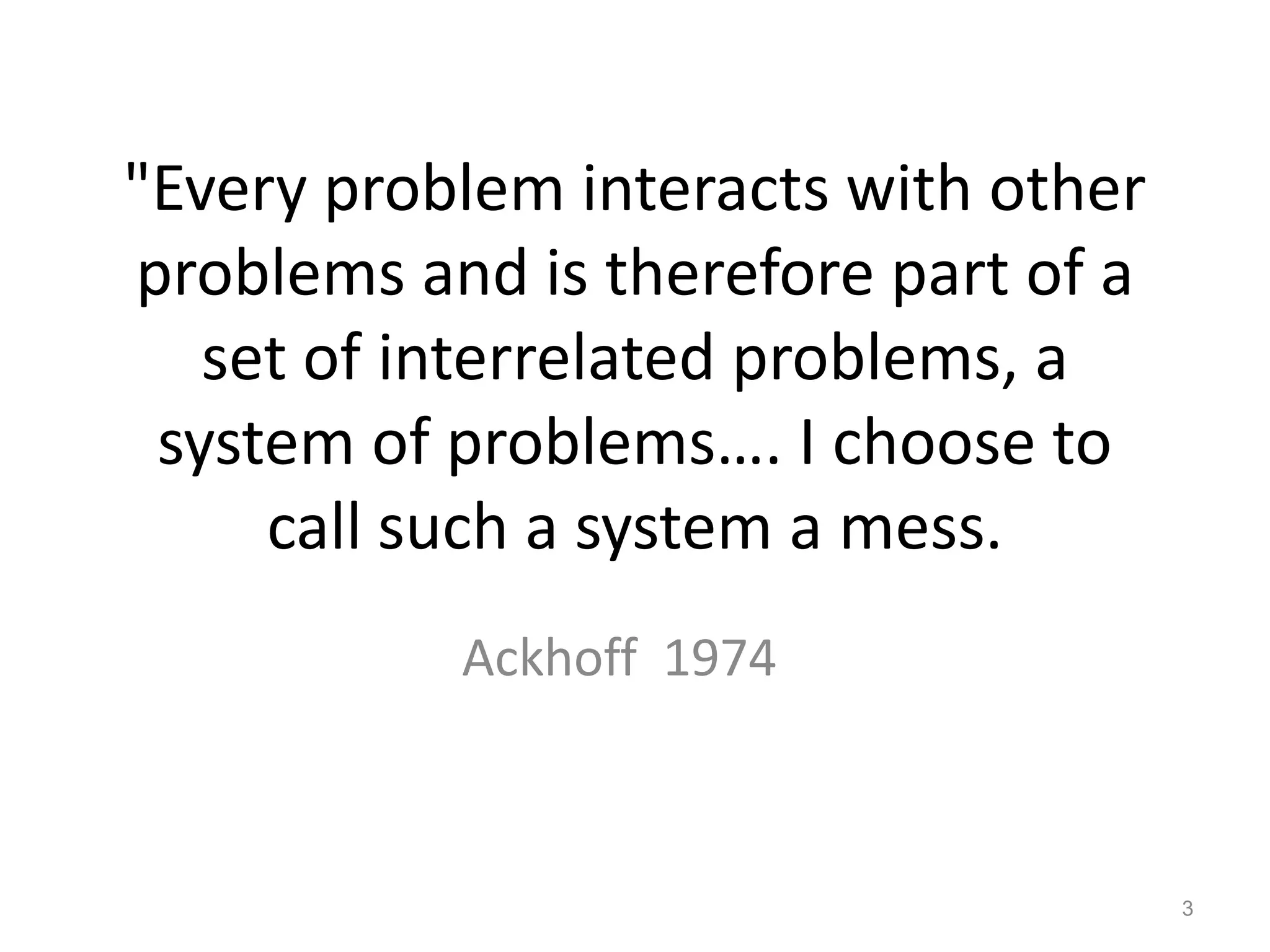
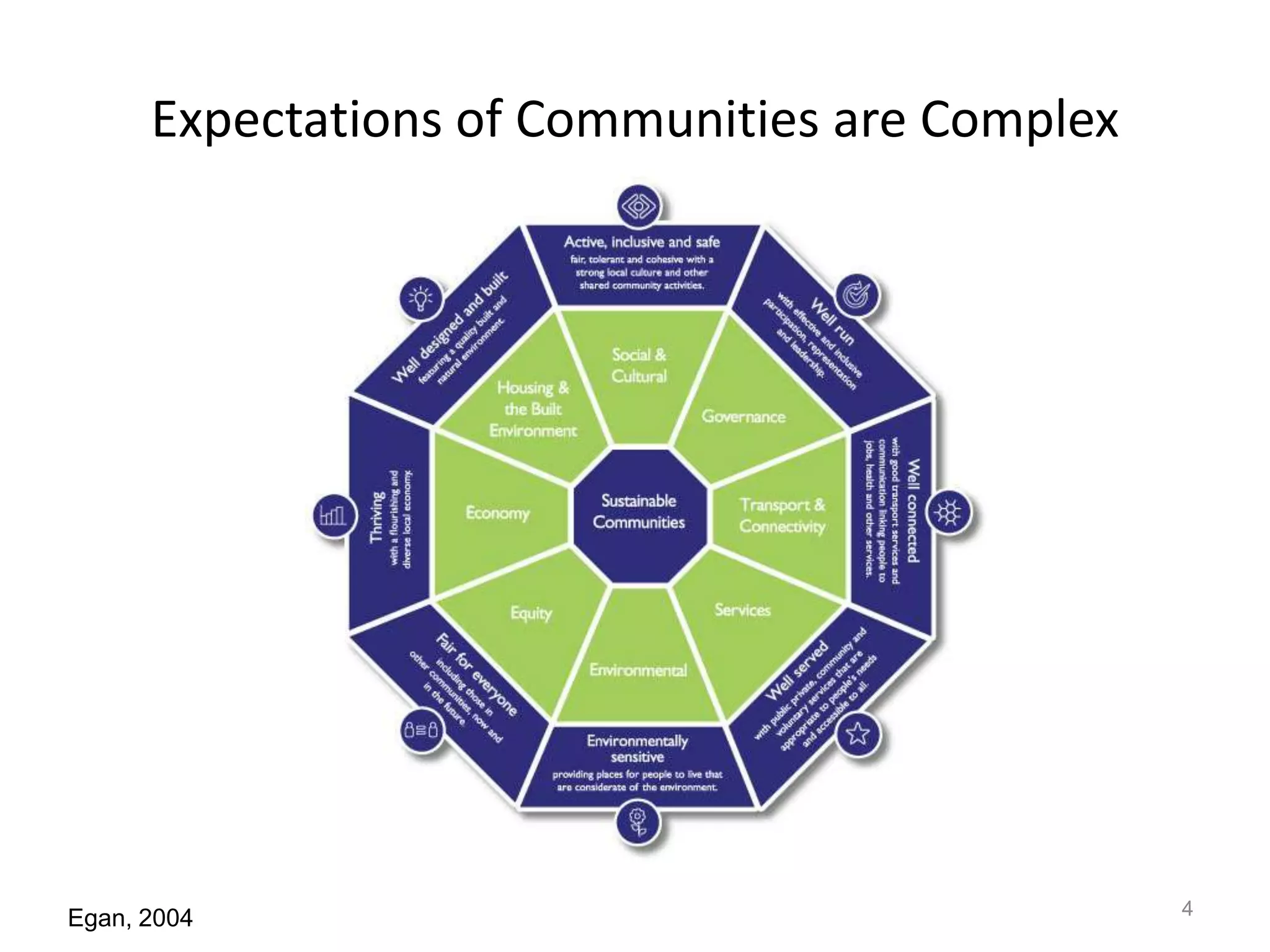
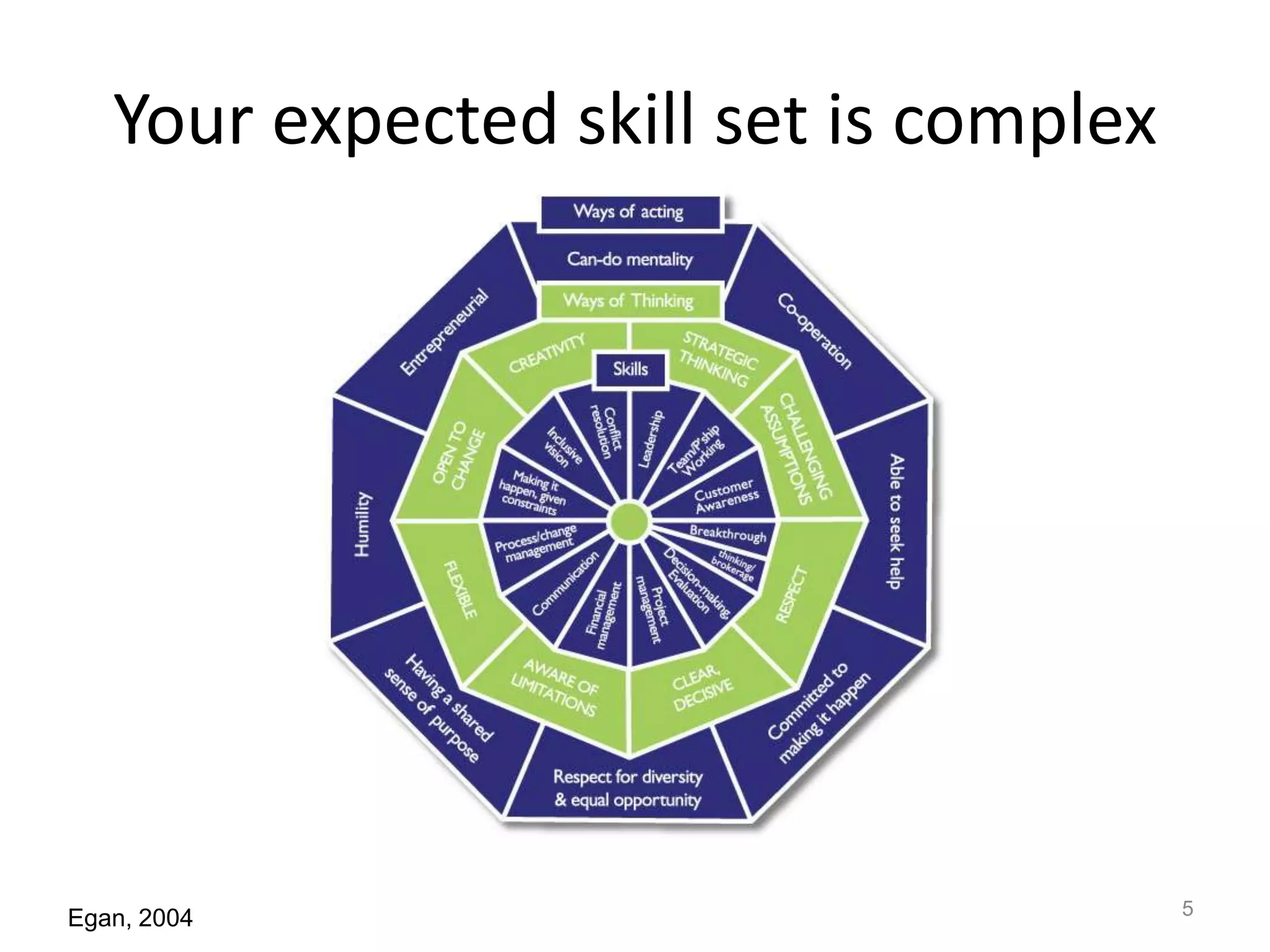
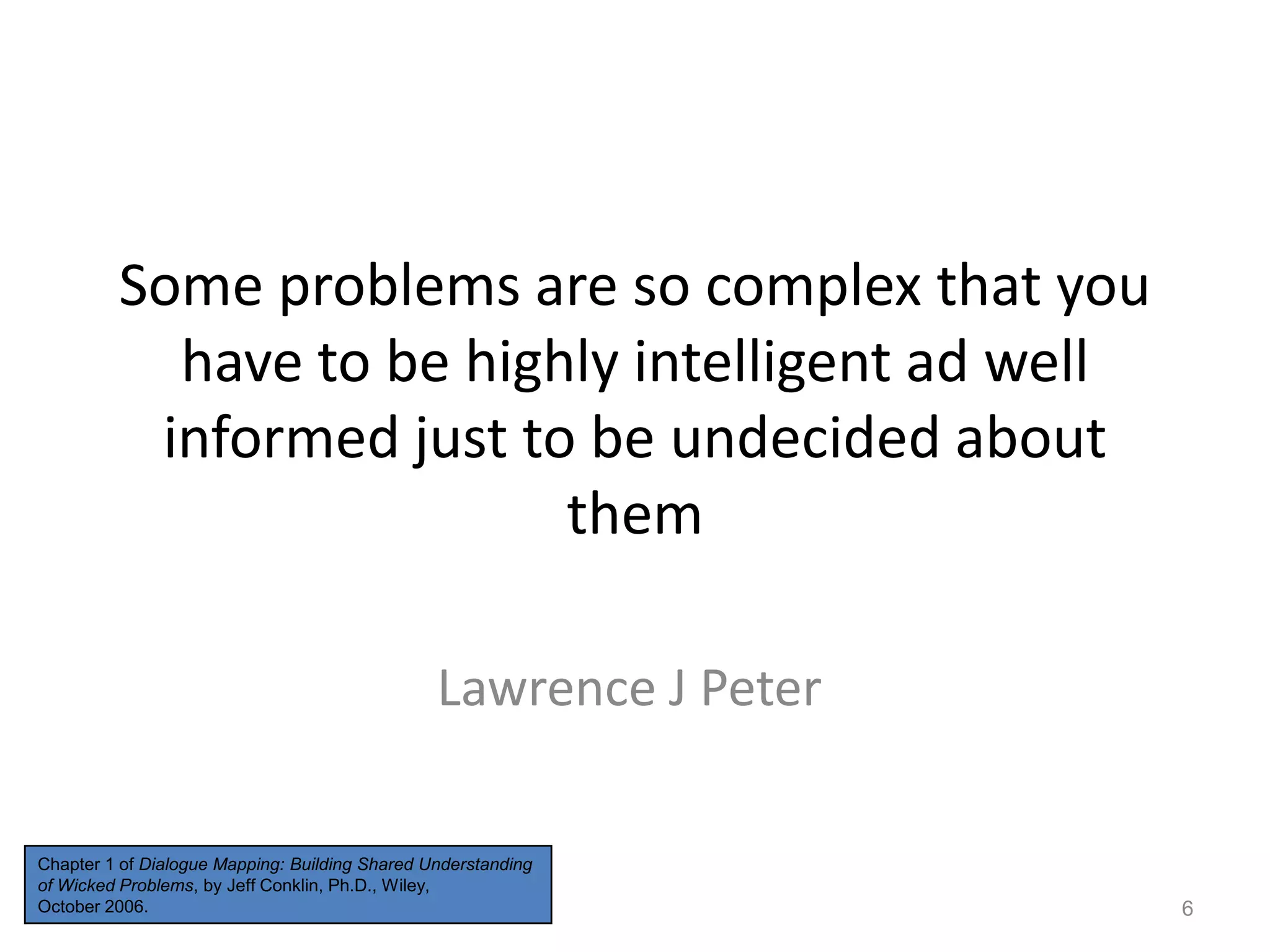
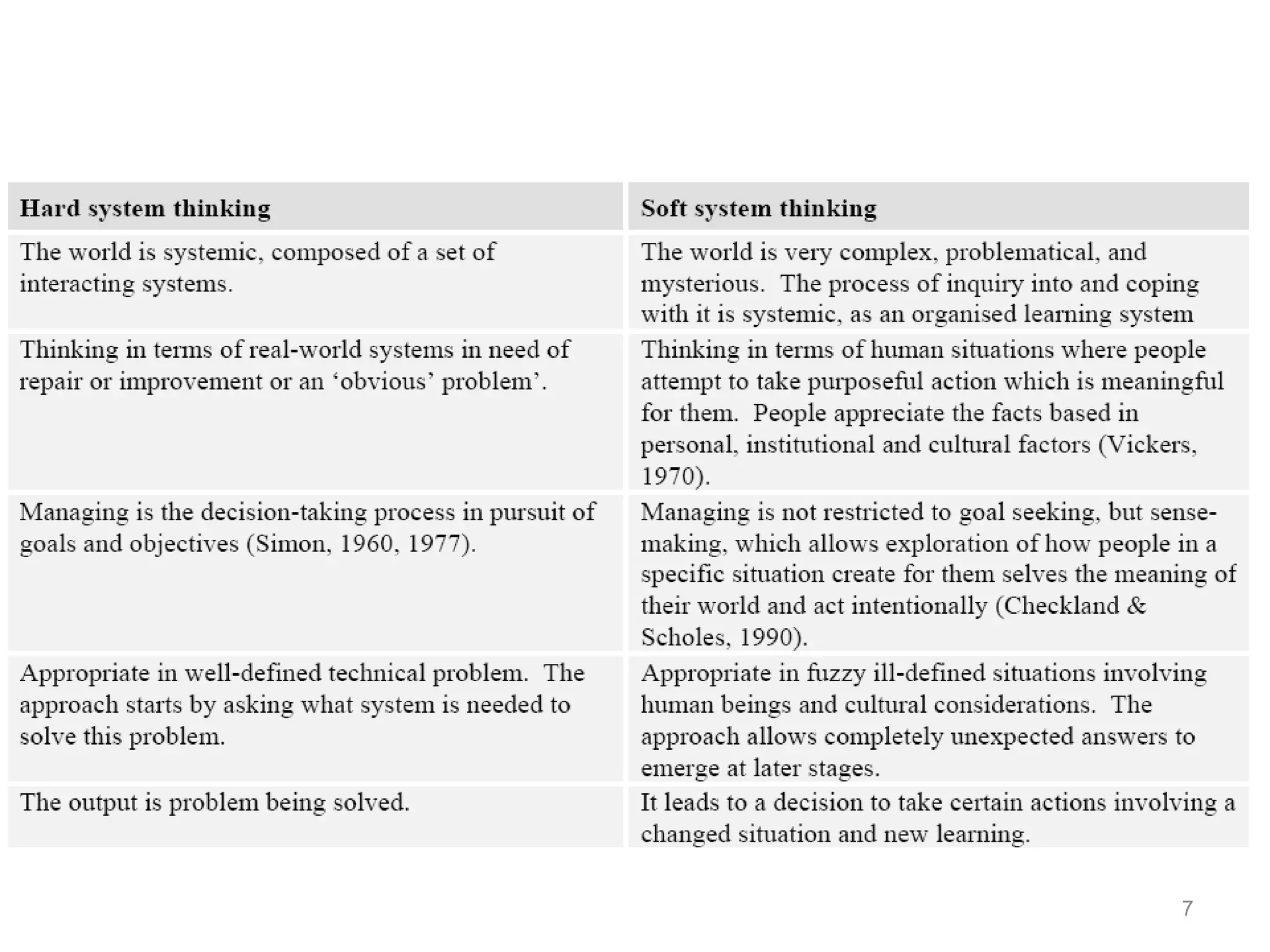
![Wicked Problems
1.
2.
3.
4.
There is no definite formulation of a wicked problem.
Wicked problems have no stopping rules.
Solutions to wicked problems are not true-or-false, but better or worse.
There is no immediate and no ultimate test of a solution to a wicked
problem.
5. Every solution to a wicked problem is a "one-shot operation"; because
there is no opportunity to learn by trial-and-error, every attempt counts
significantly.
6. Wicked problems do not have an enumerable (or an exhaustively
describable) set of potential solutions, nor is there a well-described set
of permissible operations that may be incorporated into the plan.
7. Every wicked problem is essentially unique.
8. Every wicked problem can be considered to be a symptom of another
[wicked] problem.
9. The causes of a wicked problem can be explained in numerous ways. The
choice of explanation determines the nature of the problem's resolution.
10.[With wicked problems,] the planner has no right to be wrong.
Ritchie, T (2005)
8](https://image.slidesharecdn.com/wickedissues-tamingproblemsandsystems-140107100016-phpapp01/75/Wicked-issues-taming-problems-and-systems-8-2048.jpg)

![Wicked Problems 2
6.
Wicked problems do not have an enumerable (or an exhaustively describable) set of potential solutions,
nor is there a well-described set of permissible operations that may be incorporated into the place
"There are no criteria which enable one to prove that all the solutions to a wicked problem have been
identified and considered. It may happen that no solution is found, owing to logical inconsistencies in
the 'picture' of the problem.“
7. Every wicked problem is essentially unique.
"There are no classes of wicked problems in the sense that the principles of solution can be developed
to fit all members of that class." …Also, …"Part of the art of dealing with wicked problems is the art
of not knowing too early which type of solution to apply."
8. Every wicked problem can be considered to be a symptom of another [wicked] problem.
Also, many internal aspects of a wicked problem can be considered to be symptoms of other internal
aspects of the same problem. A good deal of mutual and circular causality is involved, and the
problem has many causal levels to consider. Complex judgements are required in order to determine
an appropriate level of abstraction needed to define the problem.
9. The causes of a wicked problem can be explained in numerous ways. The choice of explanation
determines the nature of the problem's resolution.
"There is no rule or procedure to determine the 'correct' explanation or combination of [explanations for
a wicked problem]. The reason is that in dealing with wicked problems there are several more ways
of refuting a hypothesis than there are permissible in the *e.g. physical+ sciences.“
10. [With wicked problems,] the planner has no right to be wrong.
In "hard" science, the researcher is allowed to make hypotheses that are later refuted. Indeed, it is just
such hypothesis generation that is a primary motive force behind scientific development (Ritchey,
1991). Thus one is not penalised for making hypothesis that turn out to be wrong. "In the world of …
wicked problems no such immunity is tolerated. Here the aim is not to find the truth, but to improve
some characteristic of the world where people live. Planners are liable for the consequences of the
actions they generate …"
Ritchie, T (2005)
10](https://image.slidesharecdn.com/wickedissues-tamingproblemsandsystems-140107100016-phpapp01/75/Wicked-issues-taming-problems-and-systems-10-2048.jpg)
